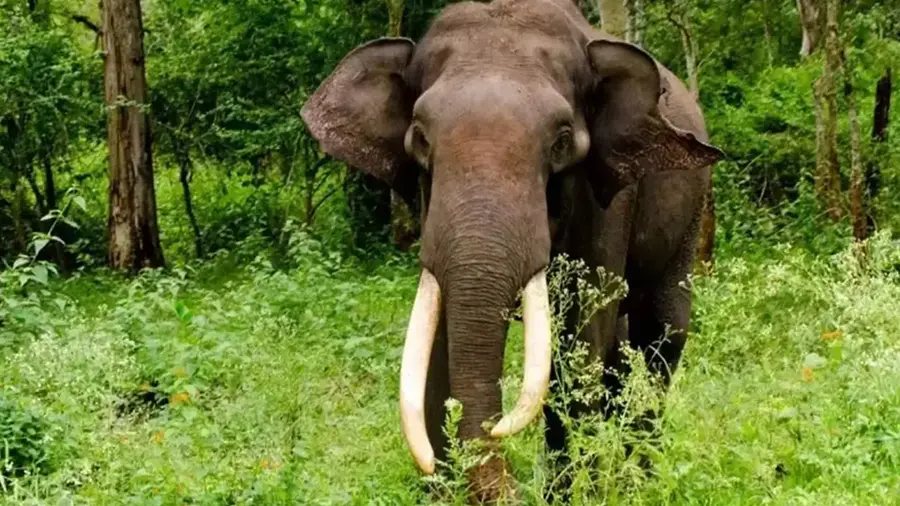Kerala’s Growing Human-Wildlife Conflict: A Battle on Multiple Fronts


Anie Anna Thomas
Published on Feb 15, 2025, 06:33 PM | 7 min read
On February 10, 2025, 45-year-old Manu, a tribal resident of Noolpuzha in Kerala’s Wayanad district, stepped out to buy groceries and never returned home. His body was found trampled by a wild elephant near a forest fringe area, a grim reminder of the escalating human-wildlife conflict ravaging Kerala. Just a day later, 27-year-old Balakrishnan met a similar fate in Attamala, another area where wild animals are increasingly encroaching on human territories. Meanwhile, on January 24, 47-year-old Radha, wife of a temporary forest watchman, was attacked by a tiger while plucking coffee cherries at the Priyadarshini Estate in Pancharakolly village. Radha’s tragic death, linked to a "man-eater" tiger, underscored the growing dangers faced by people in forestadjacent areas.
These stories are stark reminders of a crisis that has become an urgent reality for rural and tribal communities across Kerala. The state, known for its lush greenery and rich biodiversity, is now grappling with an alarming rise in human-wildlife conflicts. From Wayanad to Idukki and extending to Palakkad and Pathanamthitta, families live in constant fear, their lives and livelihoods under threat from elephants, tigers, leopards, and wild boars.
The Rising Tide of Animal Attacks
Kerala’s human-wildlife conflict is not new, but its intensity has surged in recent years. In 2024 alone, the state recorded 58 human fatalities from wildlife attacks, with thousands more injured. The victims are often farmers, tribal communities, and those whose lives are intricately tied to the land and forests. Elephants are the primary culprits, responsible for the majority of fatalities. Kerala is home to approximately 600 wild elephants, one of the highest concentrations of Asian elephants in India. These gentle giants, whose presence once evoked admiration, have now turned into harbingers of death and destruction, forcing rural communities to live in constant fear. Wild boars, too, are a growing menace, destroying crops like paddy, Banana, and vegetables, leaving farmers in despair. Tiger Captured from Wayanad
Tiger Captured from Wayanad
Big cats like tigers and leopards have also joined the fray. In Wayanad, Idukki, and Attappady, these predators are increasingly encroaching on human territories, attacking both livestock and people. The fragmentation of Kerala’s forests has shrunk their natural habitats, forcing them into populated zones.
Shrinking Forests, Rising Conflicts
The escalating frequency of animal attacks is closely linked to the shrinking capacity of forests to accommodate the growing wildlife populations. Kerala is home to rich and diverse ecosystems, from tropical rain forests to the mountainous regions of Idukki and Wayanad. However, urban expansion, agricultural encroachment, and illegal logging are placing increasing pressure on these ecosystems.
Elephants, in particular, require large tracts of forest to roam and forage, and the loss of forest corridors has forced them to venture into human settlements. Similarly, tigers, being territorial apex predators, require vast, undisturbed forest landscapes with sufficient prey populations to survive. However, habitat destruction has not only reduced their hunting grounds but also forced them to compete for resources, leading them to stray into human-inhabited areas in search of food. As natural resources in the forests dwindle, wildlife is pushed into human habitats, leading to inevitable conflicts.
Additionally, animal populations, particularly elephants, are growing at an unsustainable rate. While the overall number of elephants in Kerala is estimated at over 600, their natural habitats are shrinking, forcing these animals into closer contact with human settlements. The Kerala Forest Department has reported a rise in the number of elephants migrating to non-protected areas, where human-animal conflict is inevitable. Many elephants that enter Kerala from neighbouring Karnataka do so in search of water, as Kerala’s forests have more water bodies compared to the drier regions of Karnataka. This seasonal migration heightens human-wildlife conflicts, as these displaced elephants, unfamiliar with their new surroundings, frequently encounter human settlements, leading to increased confrontations.

No Silver Bullet Solution
Many have sought a "silver bullet" solution to curb human-wildlife conflict, but such a universal approach is simply not feasible. While certain methods may be effective in specific contexts, they cannot be applied universally, particularly in Kerala’s diverse ecosystem. For example, in parts of Africa, farmers have successfully used beehive fences, where honey boxes are placed along farm boundaries to deter elephants. Elephants are afraid of honeybees and avoid them because bees sting them in sensitive areas around their trunks, eyes, and the inside of their ears. However, such methods have proven ineffective in Kerala, where different species—such as tigers, leopards, and bears—pose unique challenges.
Similarly, barriers like electric fences have also become less effective, as elephants—highly intelligent and social animals—have learned to outmaneuver them. In some cases, they have been observed using logs and branches to disable or break down fences, allowing entire herds to pass through. This phenomenon of "generational memory" is particularly concerning, as younger elephants learn these tactics from older members of the herd, making traditional deterrents less effective over time.
The sheer complexity of the issue demands a multifaceted approach. Kerala’s wildlife is diverse, and the threats they pose vary widely. What works for elephants may not work for tigers or wild boars. This lack of a one-size-fits-all solution has made the crisis even more difficult to manage, requiring innovative and adaptive strategies to mitigate conflicts effectively. Beehive Fences in East Africa
Beehive Fences in East Africa
The Central Government’s Neglect of the Issue
As Kerala continues to struggle with the worsening human-wildlife conflict, the Union Government’s response has remained inadequate, hampering the state’s ability to effectively tackle the crisis. A key obstacle is the Wildlife Protection Act of 1972, which, while successful in species conservation, has become a hindrance in cases of aggressive animals. Its rigid provisions prevent quick actions, such as culling or relocating animals like tigers or elephants, which pose significant risks to human safety. National wildlife policies, such as the National Wildlife Action Plan, have failed to consider Kerala’s unique ecological challenges. The state’s diverse wildlife—including elephants, tigers, and leopards—requires a region-specific approach, which federal policies have not provided.
The absence of a customised federal response has forced Kerala to manage increasing wildlife pressures without adequate support. Initiatives like Project Elephant, intended to aid conservation efforts, have been poorly funded and sluggishly implemented. Moreover, the Union Government’s centralised approach to conservation has led to a lack of seamless coordination with state authorities, further complicating efforts. As a result, local agencies struggle to respond swiftly to urgent conflicts.
Kerala’s Fight Against Human-Wildlife Conflict
In contrast to the central government’s inaction, Kerala has taken a decentralised, community--driven approach to managing human--wildlife conflict. The Kerala Forest Department has implemented various local initiatives, such as solar-powered electric fences around vulnerable villages and farms. Though effective in some areas, these fences require regular monitoring and maintenance to remain functional.
The state government has also introduced compensation schemes for farmers who lose crops or livestock to wild animals, though these funds are often insufficient to offset long-term losses. Additionally, Kerala has embraced innovative technologies like drones and camera traps to track wildlife movement and enhance response times during potential conflicts.
By actively involving local communities in wildlife management, Kerala has ensured that solutions are culturally sensitive and locally relevant. Collaboration with tribal communities and farmers has played a crucial role in reducing the frequency and severity of animal attacks. However, while Kerala’s community-based strategies have shown promise, the state cannot succeed in isolation.
The escalating human-wildlife conflict in Kerala demands a coordinated effort at both state and national levels. The Union Government must step up, reviewing its policies and providing adequate support to balance wildlife conservation with human safety and livelihoods. By investing in wildlife corridors, strengthening local engagement, and leveraging innovative conflict-management tools, Kerala is paving the way for sustainable coexistence. But long-term success depends on the active involvement of both state and central authorities, ensuring that conservation efforts do not come at the cost of human well-being.










0 comments